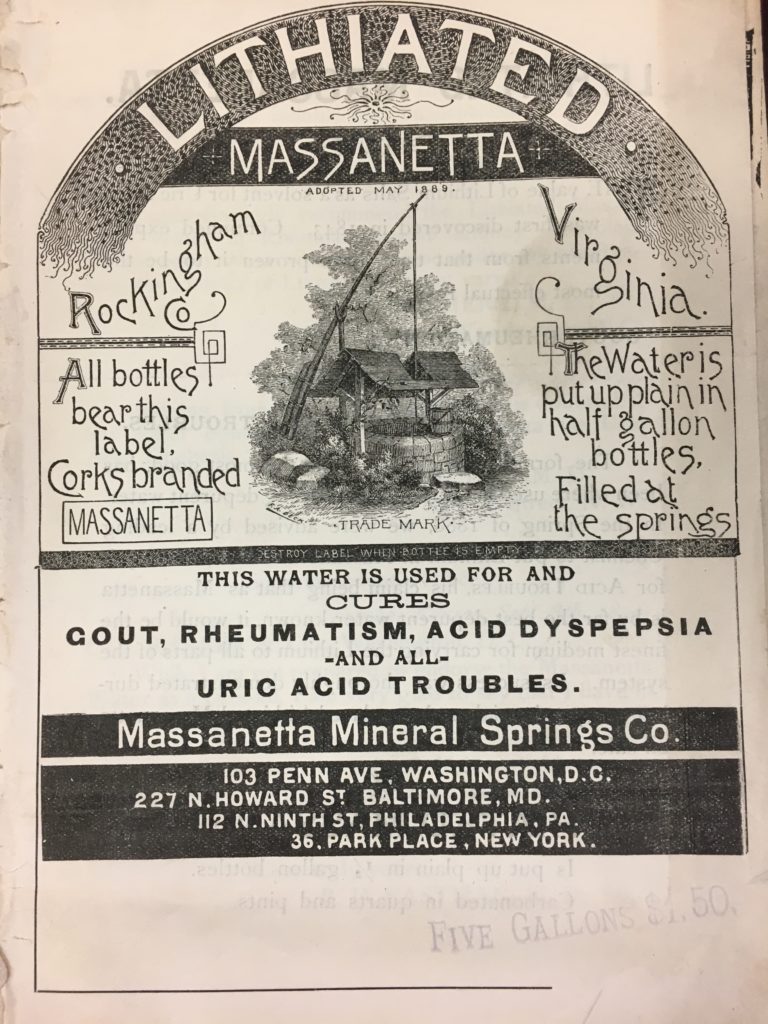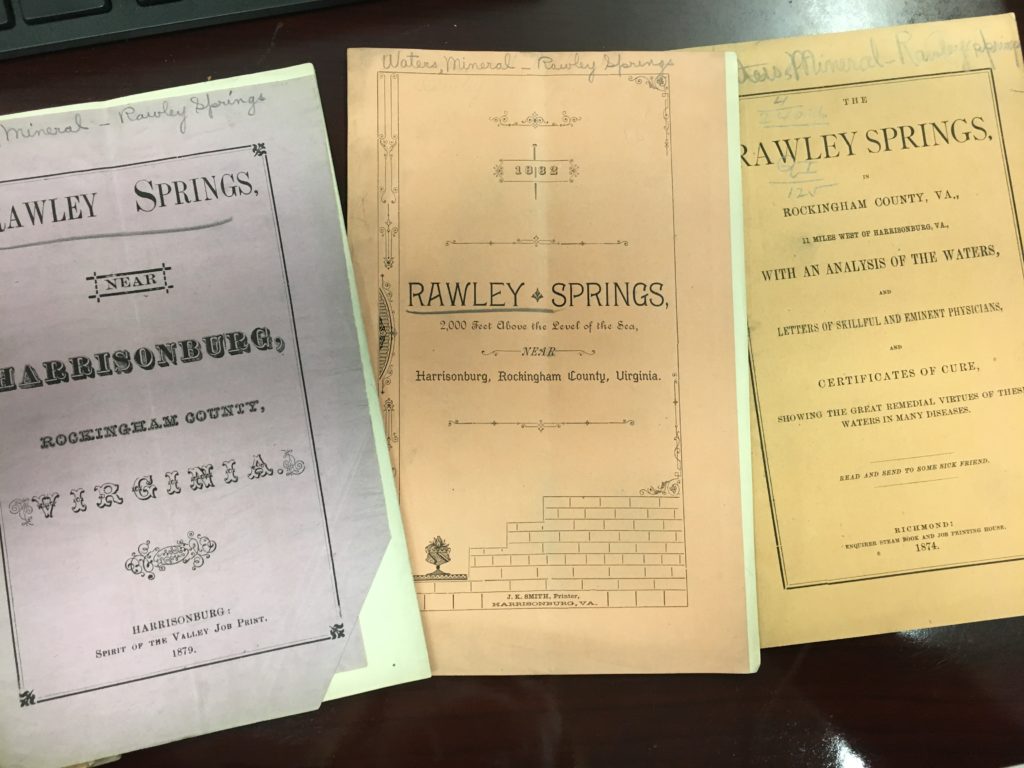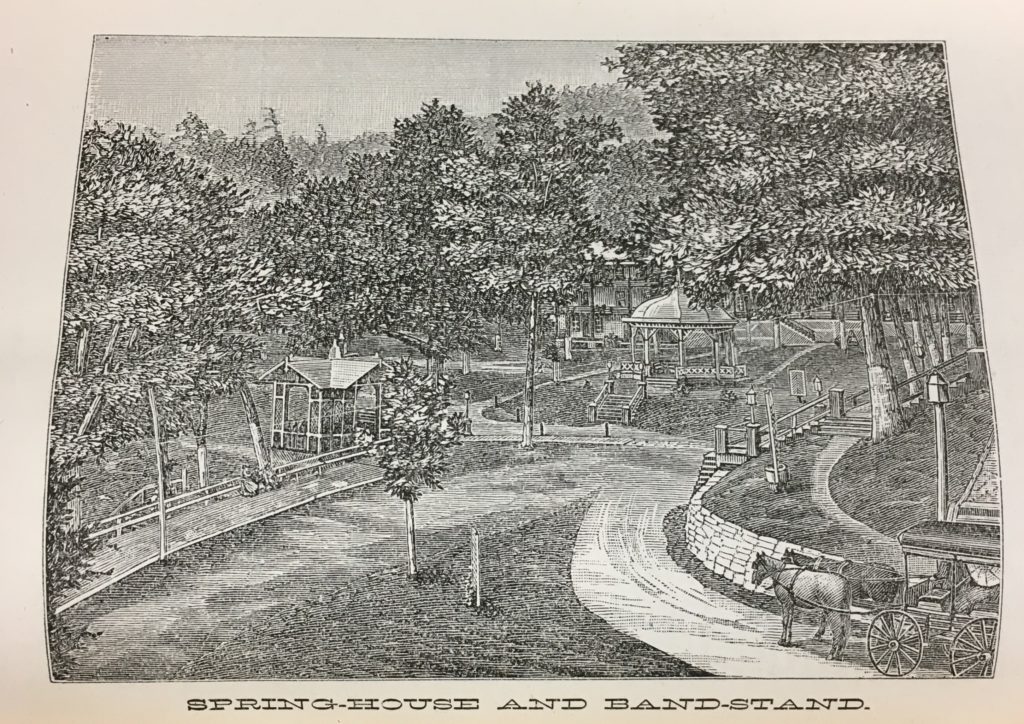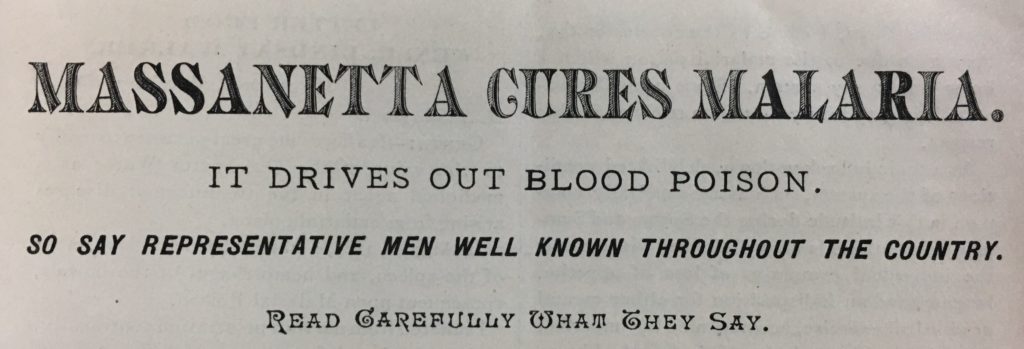This is one of a great series of posts from the College of Physicians of Philadelphia Historical Medical Library blog called #TravelTuesday. This post by Caitlin Angelone.
Rawley Springs is an unincorporated community in Rockingham County, 9 miles west of Harrisonburg, Virginia, and was once known for its lavish medical resort. European men began to settle the land in the early 19th century. One of the earliest settlers was Benjamin Smith, who sent his wife Elizabeth to the springs for her health in 1810. Doctors were perplexed on what was causing her illness, but within six weeks of staying at the springs and drinking the water she was cured. Shortly after, people began to set up summer camps by the springs. Joseph Hicks is credited for purchasing land and officially advertising the small village as a resort community in 1824.
The chalybeate waters of the spring are high in iron and salts, acting as a natural tonic which has been bottled and marketed as a cure all for disease, including maladies peculiar to females, liver disease, and diseases by poverty of the blood and nervous system. The springs usually remain around “earth temperature” which is 54 degrees, making it a popular destination for a summer dip or a place to escape the diseases of summer in larger cities. The B & O and A & M Railroads reached nearby Harrisonburg, or people also had the option of taking the Rawley Springs Turnpike, which was $3.00 for a one-way trip.
Rooms cost $2.50 a day, $15 for a week, or $50 for a four week stay. The resort also housed a post office, toll house, pottery shed, and distillery. The grand dining hall could host dinners for up to 389 people and was a local attraction for a night out.
In 1886, 2 days before the grand season re-opening on June 10, a fire destroyed the dining room along with two of the three hotels. The resort struggled, but rebuilt its dining hall with the insurance money collected. The resort continued to struggle, and was sold to Massanetta & Rawley Springs Company in 1914, and the same year another fire destroyed the rest of the remaining buildings. The company did not rebuild and instead divided the land in 1918, which was sold for smaller cottage homes.
Today, Rawley Springs remains a popular attraction. The large and risky rock formations make it popular for hikers, while places like the “Blue Hole” in the Dry River still attract people for fishing and swimming. Commercialization of the area is not allowed, meaning there are no longer hotels and resorts on the land. All buildings of the former resort have been destroyed, and only stone land markers remain outlining the hotels. Private homes still remain and are actively used for summer homes by nearby Harrisonburg residents.
Sources:
Rafuse, Diana. “A Brief History of Rawley Springs.” 2007.
Rafuse, Diana. “Mixing Pleasure and Profit at the Springs: The Harrisonburg-Rawley Connection.” The Harrisonburg-Rockingham Historical Society Newsletter. Vol. 31, No. 2, 2009.
Rawley Springs. (Medical Trade Ephemera Collection) Historical Medical Library of The College of Physicians of Philadelphia, Philadelphia, PA.
“Rawley Springs, Virginia.” Harrisonburg, 1995. Website. 11/29/18. http://www.harrisonburg.org/rawley/










